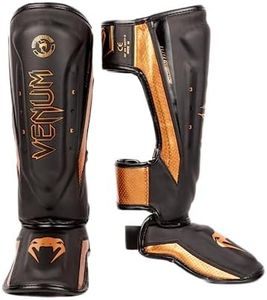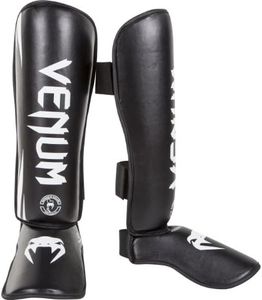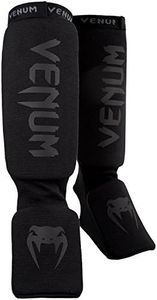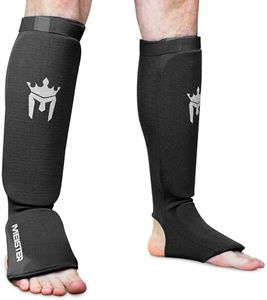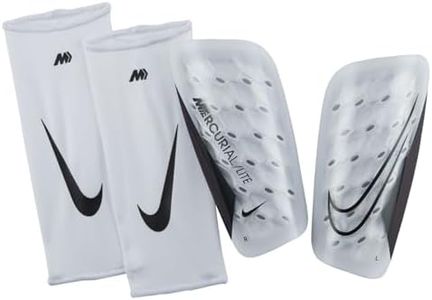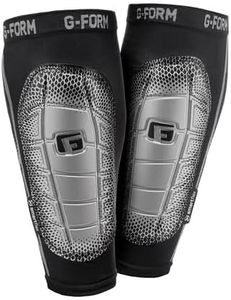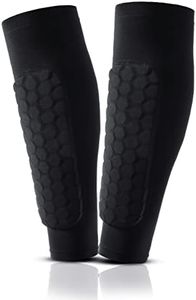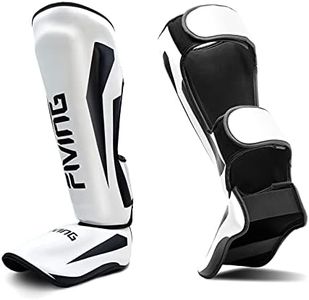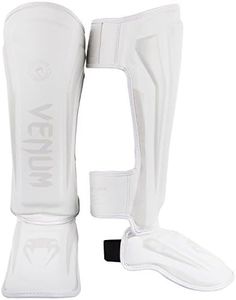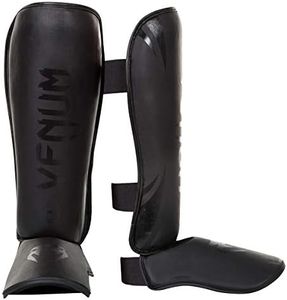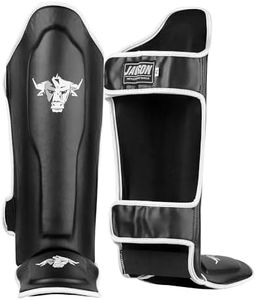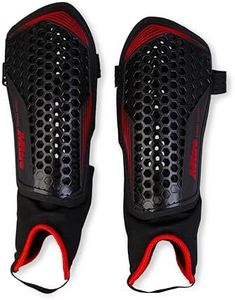We Use CookiesWe use cookies to enhance the security, performance,
functionality and for analytical and promotional activities. By continuing to browse this site you
are agreeing to our privacy policy
10 Best Shin Guards
From leading brands and best sellers available on the web.By clicking on a link to a third party's website, log data is shared with that third party.
Buying Guide for the Best Shin Guards
Choosing the right shin guards is essential for comfort, protection, and performance, especially if you play sports like soccer, hockey, or martial arts. The main purpose of shin guards is to protect your shins from impact and injury during play. Understanding a few key aspects will help you select a pair that not only fits well but also enhances your game experience without being a distraction or causing discomfort.Size and FitSize and fit refer to how well the shin guards cover and conform to your legs. This is important because shin guards that are too small won't offer enough protection, while ones that are too large can be bulky and shift around. Sizes are typically based on your height or age, but you should also consider the width of your leg. For younger or shorter players, smaller and more lightweight guards work best, while taller players or those looking for more coverage should opt for larger models. The right fit should feel snug and comfortable, offering good protection without hindering movement.
MaterialMaterial determines the level of protection and comfort the shin guards provide. Common materials include plastic, foam, fiberglass, and sometimes carbon fiber. Harder materials like fiberglass and carbon fiber offer better impact resistance and are usually preferred by more competitive or older players. Plastic is lighter and more flexible, making it suitable for casual play or for younger athletes. Foam lining on the inside helps with comfort and absorbs sweat. Consider how much protection you need based on the level and intensity of your sport for best results.
Type (Slip-in vs. Ankle Guard)Type refers to the design style of the shin guard. Slip-in shin guards are lightweight and slide directly under your socks, providing simple protection and maximum mobility—favored by experienced or advanced players who value speed and freedom of movement. Ankle guard types come with additional padding and protection around the ankle, which is great for newer players or anyone who needs more comprehensive protection. Your choice here depends on your level, position, and personal comfort preferences.
Closure SystemThe closure system is how the shin guards stay attached to your legs. Options include sleeves, straps, or elastic bands. Straps allow adjustable tightness, ensuring the guard stays in place, which is helpful for a more secure fit. Sleeves provide a more uniform compression and may be more comfortable but can be harder to adjust during play. If you move around a lot or play at a higher level, opt for a closure system that ensures the guards won’t slip out of place.
WeightWeight refers to how heavy the shin guards feel when worn. Lightweight shin guards allow for greater agility and are less likely to feel cumbersome, which is important for quick players and younger athletes. Heavier guards may offer more protection, but they can slow you down or become uncomfortable during longer play. Think about your style of play and whether you prioritize protection over mobility when considering the weight of your shin guards.
VentilationVentilation is about how much air the shin guards let through to your skin, helping in keeping you cool and reducing sweat. More ventilation means less moisture buildup and a more comfortable experience, especially during intense or hot-weather games. Look for shin guards with mesh panels or specially designed holes if you are prone to overheating or play for long periods.

